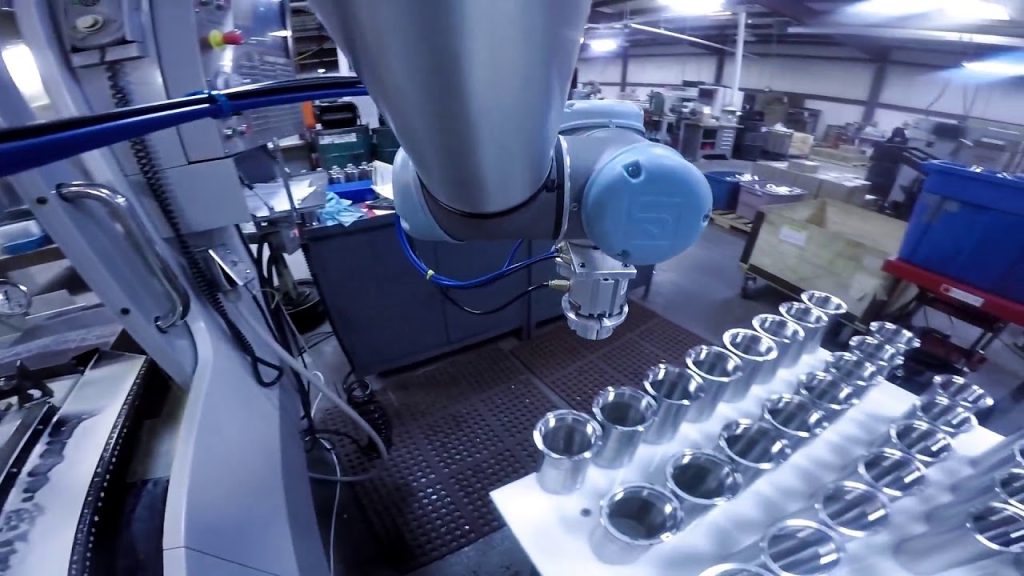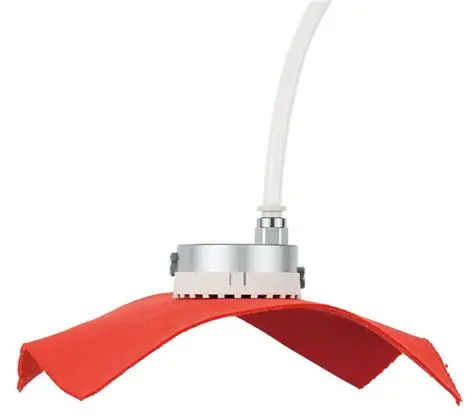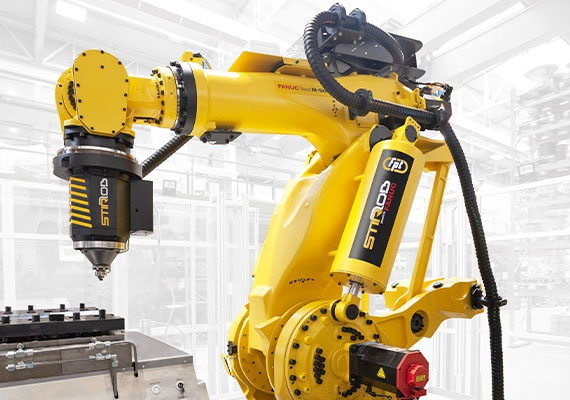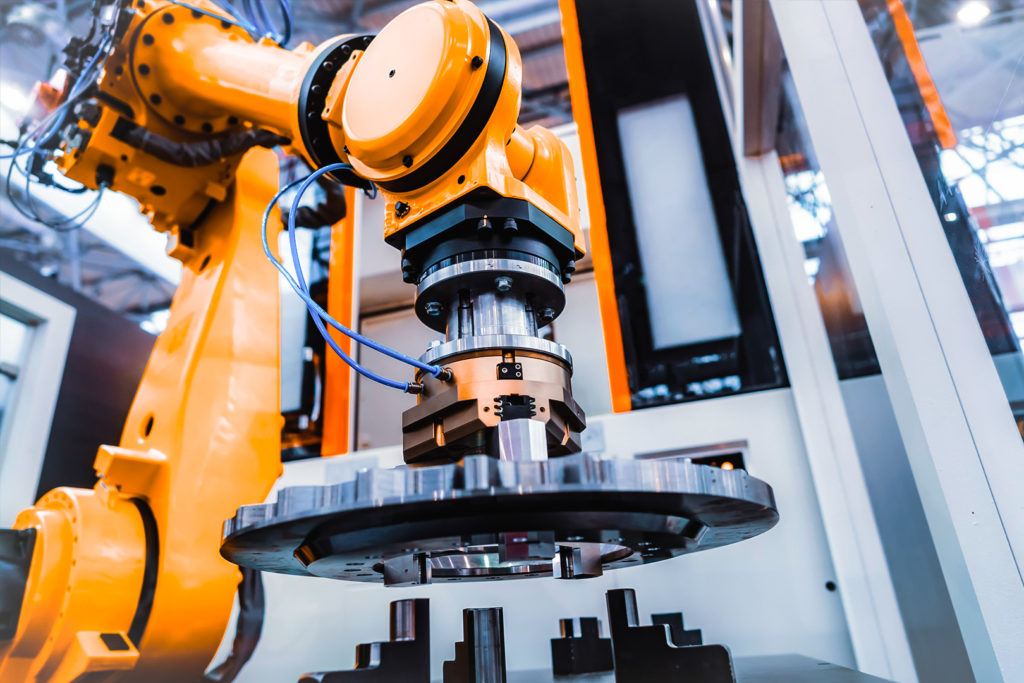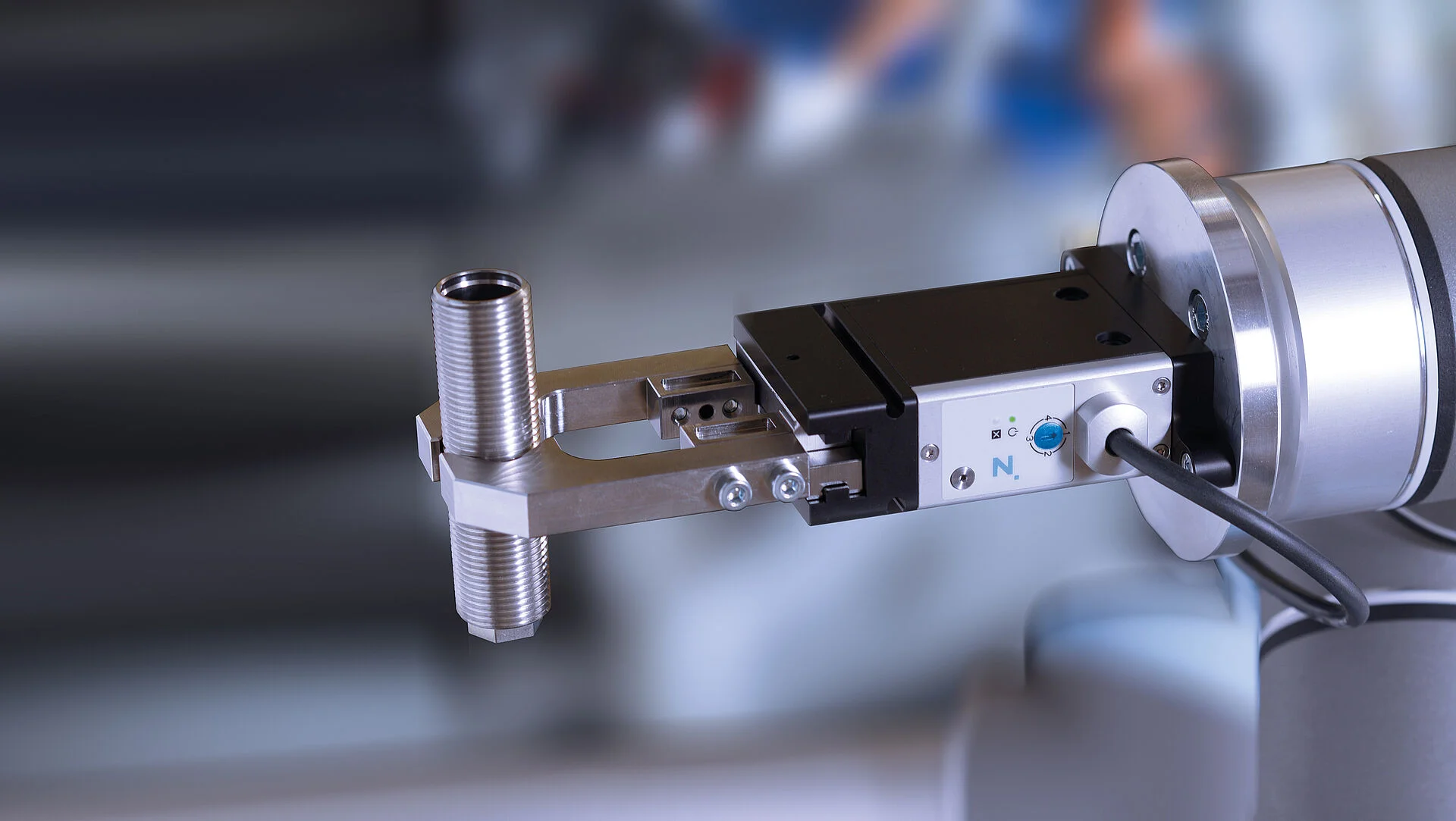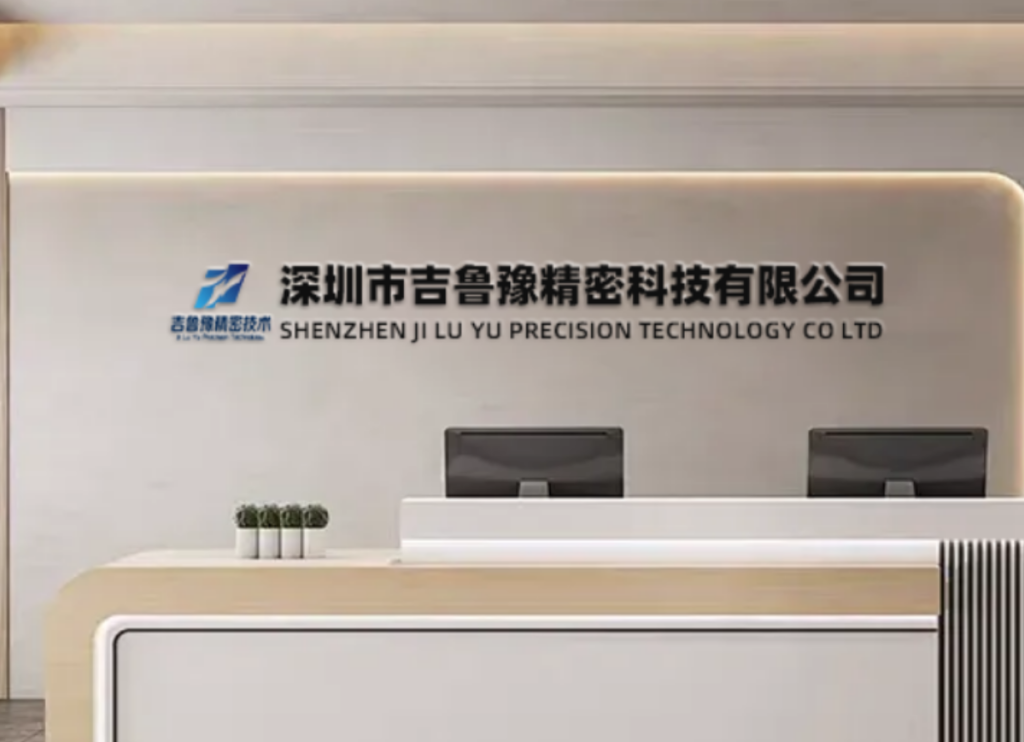The Evolution of Manufacturing Agility: Robotic Tool Changer Systems in Modern CNC Operations
In today’s competitive manufacturing landscape, where production flexibility and operational efficiency directly impact profitability, the implementation of Robotic Tool Changer technology represents a transformative advancement in automated manufacturing systems. These sophisticated interface mechanisms enable industrial robots to automatically exchange end-effectors, transforming single-function automation cells into versatile, multi-process manufacturing systems. At JLYPT, our experience in precision CNC machining has demonstrated that strategic integration of Robotic Tool Changer systems can reduce changeover times by up to 85% while maintaining the micron-level accuracy required in precision manufacturing applications.
This comprehensive technical analysis examines the engineering principles, system architectures, and strategic implementation methodologies of Robotic Tool Changer technology within advanced manufacturing environments. We will explore the complete spectrum of tool changing solutions, from basic mechanical couplers to advanced smart connector systems, providing manufacturers with a detailed framework for optimizing their automated manufacturing processes.
Fundamental Engineering Principles of Robotic Tool Changers
Understanding the core mechanical and control principles of tool changing systems is essential for effective implementation in manufacturing environments. Robotic Tool Changer systems represent a sophisticated integration of mechanical engineering, materials science, and control systems technology:
-
Kinematic Coupling Principles: High-precision tool changers utilize kinematic coupling designs that provide repeatable positioning accuracy through mathematical principles of constraint. These systems typically employ three-point contact geometries that eliminate over-constraint while maintaining micron-level repeatability.
-
Locking Mechanism Technologies: Modern tool changers employ various locking methodologies including:
-
Pneumatic Locking Systems: Utilizing compressed air to engage locking mechanisms, offering rapid cycle times and fail-safe operation through spring-return mechanisms.
-
Hydraulic Locking Systems: Providing higher locking forces for heavy-payload applications, with capabilities for precise pressure control and damping characteristics.
-
Electric Locking Systems: Incorporating servo-driven or solenoid-activated mechanisms for precise control and energy efficiency in continuous operation applications.
-
-
Interface Stiffness Considerations: The structural integrity of the tool changer interface directly impacts machining accuracy and process capability. Advanced finite element analysis (FEA) techniques optimize stiffness-to-weight ratios while maintaining minimal deflection under dynamic loading conditions.
-
Passive and Active Compliance Features: Sophisticated tool changer designs incorporate compliance mechanisms that accommodate minor misalignments during tool engagement, preventing damage to precision components and ensuring reliable operation across thousands of change cycles.
The practical implementation of these engineering principles requires careful consideration of application requirements, operational environment, and performance expectations to achieve optimal system performance.
Technical Classification and System Architectures
The engineering landscape of Robotic Tool Changer technology encompasses multiple distinct system architectures, each with specific operational characteristics and application suitability:
1. Mechanical Coupling Classifications
-
Manual Quick-Change Systems: Utilize mechanical locking mechanisms that enable rapid tool changes without tools, suitable for low-frequency change applications requiring flexibility without full automation.
-
Automated Tool Changers: Incorporate pneumatic, hydraulic, or electric actuation for completely automated tool exchange, enabling unmanned operation and integration with manufacturing execution systems.
-
Hybrid Change Systems: Combine manual convenience with automated precision, allowing both manual and automated tool changes within the same manufacturing cell for maximum operational flexibility.
2. Load Capacity and Performance Categories
-
Low-Payload Systems (1-50 kg): Designed for assembly, material handling, and light machining applications, featuring compact designs and rapid change cycles under 2 seconds.
-
Medium-Payload Systems (50-500 kg): Engineered for welding, material removal, and machine tending applications, balancing performance capabilities with structural robustness.
-
High-Payload Systems (500-2000 kg): Built for heavy machining, large component handling, and automotive manufacturing applications, emphasizing structural integrity and moment capacity.
-
Ultra-High-Payload Systems (2000+ kg): Custom-engineered solutions for aerospace, heavy equipment, and specialized industrial applications requiring exceptional load capacity and stiffness.
3. Connection Interface Technologies
-
Single-Pass Utility Connectors: Incorporate electrical, pneumatic, and fluid connections within the main coupling mechanism, enabling complete tool functionality through a single engagement cycle.
-
Modular Connection Systems: Utilize separate utility connection modules that engage sequentially or simultaneously, providing flexibility for applications with varying utility requirements.
-
Smart Connection Interfaces: Incorporate data bus connections, Ethernet communications, and sensor feedback capabilities for advanced tool monitoring and process control applications.
Critical Performance Parameters and Selection Criteria
Selecting the optimal Robotic Tool Changer system requires careful analysis of multiple technical parameters aligned with specific application requirements:
Primary Performance Metrics:
-
Positioning Repeatability: The ability to consistently return to the same position after multiple change cycles, typically ranging from ±0.0005 mm to ±0.05 mm depending on system precision and price point.
-
Locking Force Capacity: The maximum force the locking mechanism can withstand before disengagement, directly impacting system safety and operational reliability under dynamic loading conditions.
-
Moment Load Capacity: The maximum bending moment the coupling can sustain while maintaining positional accuracy and locking integrity, critical for applications with significant offset loading.
-
Cycle Life Expectancy: The number of change cycles the system can perform before requiring maintenance or component replacement, ranging from 50,000 cycles for economy systems to over 1,000,000 cycles for premium systems.
Application-Specific Considerations:
-
Environmental Compatibility: Resistance to cutting fluids, metal chips, welding spatter, and other manufacturing contaminants that could impact system performance and reliability.
-
Temperature Operating Range: Performance maintenance across typical manufacturing environment temperatures (5°C to 55°C) and specialized applications requiring extended temperature capabilities.
-
Utility Requirements: The number and type of electrical signals, pneumatic circuits, hydraulic lines, and data communication channels required for tool functionality.
Technical Comparison: Robotic Tool Changer Performance Specifications
The following table provides a detailed technical comparison of robotic tool changer systems across different performance categories and application requirements.
Table 1: Comprehensive Robotic Tool Changer Specification Matrix
| Technical Parameter | Standard Duty | Heavy Duty | High Precision | Ultra Clean |
|---|---|---|---|---|
| Payload Capacity | 1-50 kg | 50-500 kg | 1-100 kg | 1-25 kg |
| Position Repeatability | ±0.01 mm | ±0.02 mm | ±0.0005 mm | ±0.005 mm |
| Moment Capacity | 150-500 Nm | 500-2500 Nm | 100-800 Nm | 50-200 Nm |
| Change Cycle Time | 1.0-2.0 sec | 2.0-4.0 sec | 1.5-3.0 sec | 1.0-1.5 sec |
| Locking Force | 2-8 kN | 8-25 kN | 3-12 kN | 1-5 kN |
| Utility Passages | 4-8 | 6-12 | 4-8 | 2-4 |
| Electrical Contacts | 10-30 | 20-50 | 10-40 | 5-20 |
| Operating Life | 500,000 cycles | 250,000 cycles | 1,000,000 cycles | 300,000 cycles |
| Weight | 0.5-2.5 kg | 2.5-15 kg | 1.0-5.0 kg | 0.3-1.5 kg |
| IP Rating | IP54 | IP67 | IP65 | IP68 |
| Typical Applications | Machine tending, assembly | Welding, material handling | Precision machining, inspection | Cleanroom, electronics |
Strategic Implementation Advantages in Manufacturing
The integration of Robotic Tool Changer systems in manufacturing environments delivers significant operational advantages across multiple performance metrics:
-
Maximum Manufacturing Flexibility: A single robot equipped with a tool changer can perform multiple manufacturing processes including machining, inspection, material handling, and assembly operations within a single workcell, dramatically reducing capital equipment requirements and floor space utilization.
-
Minimized Changeover Time: Automated tool changing reduces process changeover times from hours to seconds, enabling economical production of small batches and supporting just-in-time manufacturing methodologies.
-
Enhanced System Utilization: By eliminating manual intervention for tool changes, robotic systems achieve higher utilization rates with extended unmanned operation capabilities, particularly beneficial for lights-out manufacturing scenarios.
-
Improved Process Consistency: Automated tool changing eliminates human variability in tool setup and fixturing, ensuring consistent process execution and reproducible quality across production batches.
-
Reduced Tooling Investment: Multiple manufacturing processes can share a single robotic platform, reducing the total number of robots required and associated peripheral equipment costs.
Case Studies: Robotic Tool Changer Applications in Precision Manufacturing
Case Study 1: Aerospace Component Finishing and Inspection Cell
-
Challenge: An aerospace manufacturer required deburring, polishing, and inspection of complex turbine components with cycle time constraints that made manual processing uneconomical. Traditional dedicated automation lacked the flexibility to handle component variations and process changes.
-
Solution: JLYPT implemented a robotic workcell incorporating a high-precision Robotic Tool Changer system with 12 different end-effectors including adaptive deburring tools, multi-axis force-controlled polishing heads, and non-contact inspection probes. The system automatically selected tools based on component geometry and required operations.
-
Result: Achieved 92% reduction in changeover time between operations and 67% reduction in total process time. The system maintained dimensional accuracy of ±0.01 mm while adapting to component variations without manual intervention, enabling economic production of low-volume, high-mix component families.
Case Study 2: Medical Device Multi-Process Assembly System
-
Challenge: A medical device manufacturer needed to assemble complex surgical instruments requiring adhesive dispensing, mechanical fastening, laser marking, and functional testing. Manual assembly presented challenges with process consistency and documentation requirements.
-
Solution: We developed a compact robotic workcell utilizing a high-speed Robotic Tool Changer with 8 specialized end-effectors including precision dispensers, screwdriving units, laser markers, and functional test fixtures. The system incorporated tool verification sensors and process monitoring for complete traceability.
-
Result: Increased production throughput by 185% while achieving 100% process documentation and zero assembly errors over 250,000 cycles. The system automatically adapted to different instrument variants through programmed tool selection sequences, supporting mixed-model production.
Case Study 3: Automotive Component Machining and Measurement
-
Challenge: An automotive supplier required machining of locating features on suspension components followed by immediate verification of critical dimensions. Traditional separate machining and inspection processes created logistical challenges and potential quality escapes.
-
Solution: JLYPT engineered a integrated manufacturing cell featuring a heavy-duty Robotic Tool Changer system enabling a single robot to perform milling, drilling, and precision measurement operations. The system automatically exchanged machining spindles and touch probe tools between operations.
-
Result: Reduced total process time by 58% and eliminated transportation between separate machining and inspection stations. The closed-loop system automatically compensated for tool wear based on measurement data, maintaining dimensional accuracy of ±0.025 mm across 50,000 components.
Implementation Methodology and Integration Considerations
Successful implementation of Robotic Tool Changer systems requires systematic analysis and careful planning across multiple technical dimensions:
System Integration Framework:
-
Tool Management System Architecture: Development of comprehensive tool data management including tool identification, usage tracking, maintenance scheduling, and performance monitoring.
-
Safety System Integration: Implementation of tool presence verification, load monitoring, and emergency stop protocols ensuring safe operation during automatic tool changes.
-
Peripheral Equipment Interface: Coordination with auxiliary systems including tool storage racks, utility supply modules, and safety fencing to create a complete operational system.
Operational Optimization Strategies:
-
Tool Change Sequence Optimization: Analysis of process workflows to minimize non-value-added time through optimal tool sequencing and simultaneous motion planning.
-
Preventive Maintenance Planning: Establishment of maintenance schedules based on actual usage data and performance monitoring to maximize system reliability and minimize unplanned downtime.
-
Performance Monitoring Systems: Implementation of data collection and analysis systems to track tool changer performance, identify trends, and predict maintenance requirements.
Future Development Trajectories and Emerging Technologies
The continuing evolution of Robotic Tool Changer technology focuses on several key innovation vectors:
-
Smart Tooling Systems: Development of tools with embedded intelligence including performance monitoring, usage tracking, and predictive maintenance capabilities through integrated sensors and communication systems.
-
Standardized Communication Protocols: Advancement toward universal tool communication standards enabling plug-and-play compatibility across different robot manufacturers and tooling systems.
-
Lightweight Composite Materials: Implementation of advanced composite materials and additive manufacturing techniques to reduce tool changer weight while maintaining stiffness and durability.
-
Energy-Efficient Operation: Development of low-energy locking mechanisms and smart power management systems to reduce overall system energy consumption.
Conclusion: Strategic Implementation for Manufacturing Excellence
The implementation of advanced Robotic Tool Changer systems represents a significant opportunity for manufacturers to enhance operational flexibility, reduce changeover times, and optimize manufacturing efficiency. The technology provides compelling advantages in system utilization, process consistency, and capital efficiency compared to dedicated automation solutions, particularly in environments requiring frequent process changes or product variety.
At JLYPT, our systems engineering approach to Robotic Tool Changer integration ensures that our clients benefit from optimized manufacturing solutions that complement our precision machining capabilities. By understanding both the technical foundations and practical implementation considerations of tool changing technology, we deliver integrated manufacturing systems that maximize productivity while maintaining the highest quality standards.
Ready to transform your manufacturing operations with advanced robotic tool changing technology? Contact JLYPT today to discuss your specific application requirements with our automation engineering specialists. Our team will provide comprehensive technical analysis and implementation planning to optimize your manufacturing processes through strategic automation integration.

